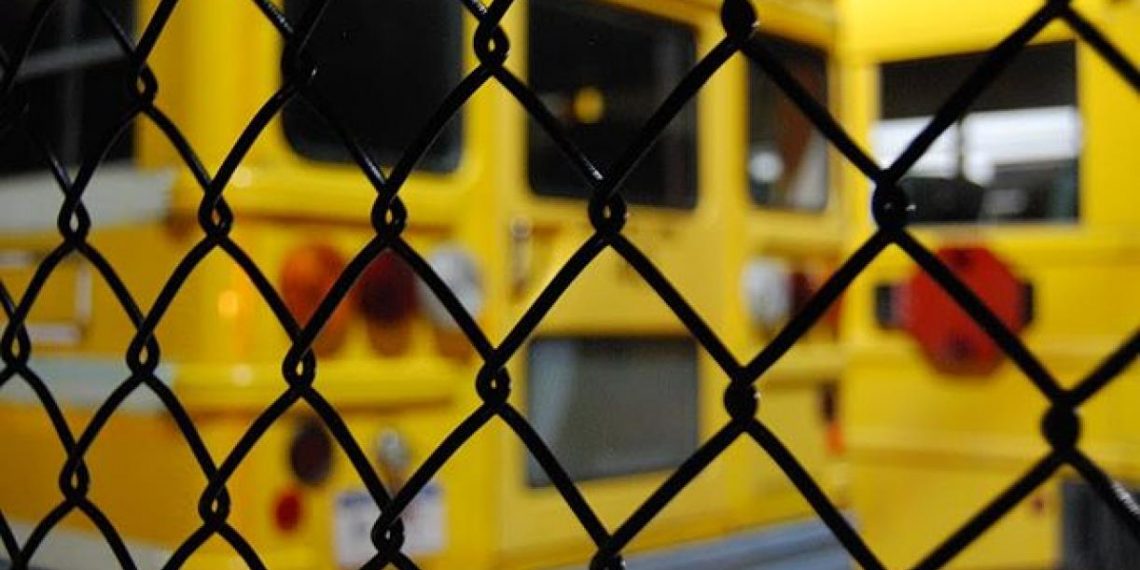The effort to electrify all U.S. school buses presents an important opportunity to help correct ingrained systems of inequity based on race, income or location-driven pollution levels. WRI has designed its Electric School Bus Initiative to respond to that opportunity by centering its work on equity. For school district technical assistance, WRI identified a set of Priority Outreach Districts, which it will use to provide the greatest support to underserved areas.
The Inequities of Air Pollution
Vehicle related air pollution presents an opportunity to explore the inequitable burden at the community and school transportation levels. Diesel-powered heavy-duty vehicles emit particulate matter, nitrogen dioxides, carcinogens, toxins and other pollutants that cause tens of thousands of respiratory illnesses, heart attacks, cancer and early deaths each year. This pollution is concentrated in communities that have fewer resources and opportunities and who face racial and other forms of discrimination. Over 90% of school buses in the U.S. burn diesel fuel (Atlas EV Hub Dashboard using IHS Markit data, 2019 and 2021), exposing children to emissions that affect their health, cognitive development and academic performance. Some students are more likely to be exposed than others: 60% of low-income students ride a school bus, compared to 45% of non-low-income students, and students from Black households are more likely to ride a school bus than other peer groups.
Priority Outreach District Methodology and Technical Assistance
Using data from Environmental Protection Agency (EPA) and National Center for Education Statistics, WRI examined school district data with respect to four characteristics to help identify students that experience the greatest inequities:
- Income (percent of households below 200% of federal poverty level)
- Race (percentage of residents who identify as non-white or Hispanic)
- Pollution (levels of either fine particulate matter (PM2.5) or ozone pollution)
- Tribal status
WRI identified 1,007 Priority Outreach Districts that are in the top quartile nationwide for all the first three characteristics or are tribal districts, as detailed data was not available to establish quartiles.
Several factors influenced the focus on these characteristics:
- Low-income communities and black and brown communities have faced historic disinvestment and under-resourcing, and black and brown communities often bear the brunt of harmful on-road air pollution.
- PM2.5 or ozone pollution levels help identify districts with the most acute need for clean-running electric school buses.
- Evidence suggests Native American children disproportionately suffer from health conditions linked to air pollution, such as asthma.
This methodology admittedly has its limitations and does not reflect every school district or community subjected to disinvestment, discrimination or historic under-resourcing. This may stem from the variations of characteristics within districts that are masked in the data, the relationship between community level data and the students that ride school buses, or other ways in which students and communities are disadvantaged that are not covered by the current characteristics.
For Priority Outreach Districts, WRI offers deep technical assistance at no cost. That involves tailored guidance to aid the district’s transition to electric school buses and prioritization for specialized support at every stage of the process, including road-mapping, stakeholder engagement, procurement, coordination with utilities, training, deployment and scaling. WRI is working to contact each Priority Outreach District to inform them of this opportunity. For other school districts, WRI offers free access to guidance documents and more generalized technical assistance.
Looking Ahead
The Priority Outreach Districts are intended to be a starting point for WRI to implement outreach, support and deep technical assistance to ensure we are working to bring the benefits of school bus electrification to the students who would benefit most from a clean ride to school. WRI intends to update the Priority Districts as new data becomes available. WRI has launched a needs assessment to better understand gaps and better tailor our technical assistance to districts in underserved areas and overall. There are indications that ESB adoption is already moving with some equity outcomes, as detailed here. Our technical assistance—combined with efforts advancing equity-centered policy, programmatic, regulatory, manufacturing and regulatory solutions—aims to enhance those trends further.
Download PDF
Download Spreadsheet



